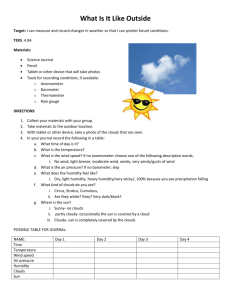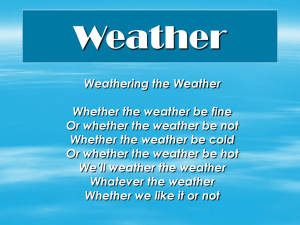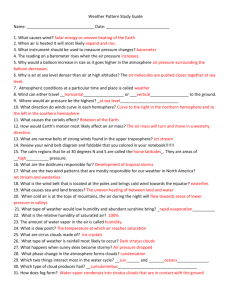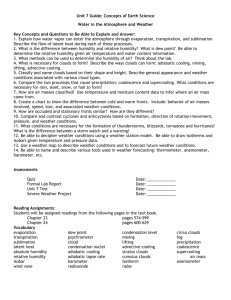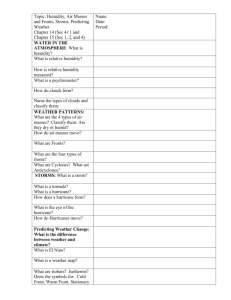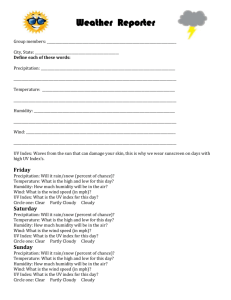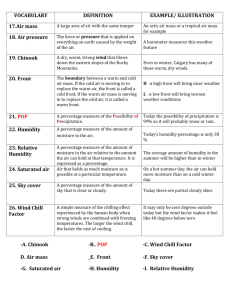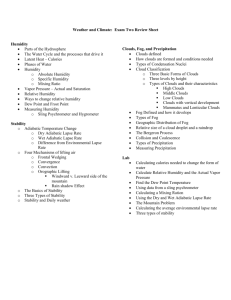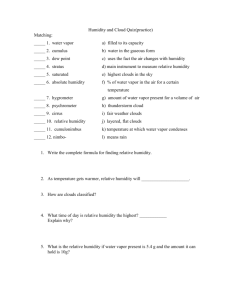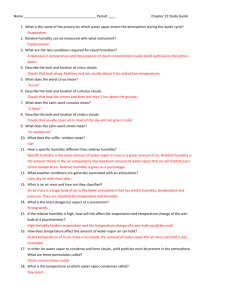Weather - Fifth Grade
advertisement
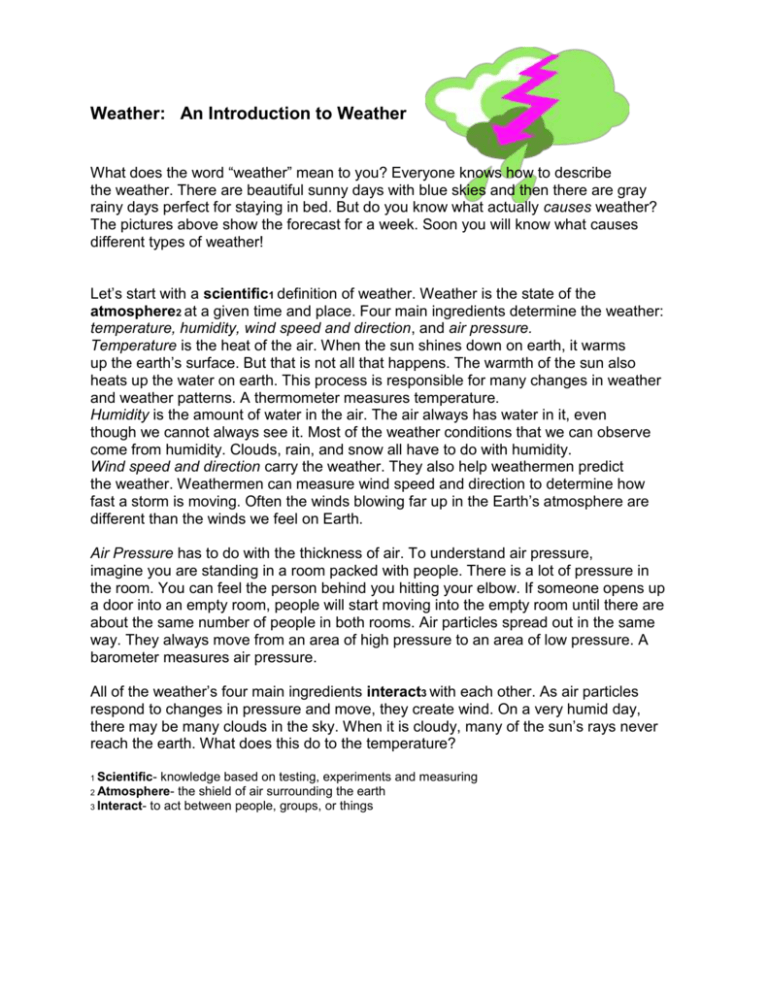
Weather: An Introduction to Weather What does the word “weather” mean to you? Everyone knows how to describe the weather. There are beautiful sunny days with blue skies and then there are gray rainy days perfect for staying in bed. But do you know what actually causes weather? The pictures above show the forecast for a week. Soon you will know what causes different types of weather! Let’s start with a scientific1 definition of weather. Weather is the state of the atmosphere2 at a given time and place. Four main ingredients determine the weather: temperature, humidity, wind speed and direction, and air pressure. Temperature is the heat of the air. When the sun shines down on earth, it warms up the earth’s surface. But that is not all that happens. The warmth of the sun also heats up the water on earth. This process is responsible for many changes in weather and weather patterns. A thermometer measures temperature. Humidity is the amount of water in the air. The air always has water in it, even though we cannot always see it. Most of the weather conditions that we can observe come from humidity. Clouds, rain, and snow all have to do with humidity. Wind speed and direction carry the weather. They also help weathermen predict the weather. Weathermen can measure wind speed and direction to determine how fast a storm is moving. Often the winds blowing far up in the Earth’s atmosphere are different than the winds we feel on Earth. Air Pressure has to do with the thickness of air. To understand air pressure, imagine you are standing in a room packed with people. There is a lot of pressure in the room. You can feel the person behind you hitting your elbow. If someone opens up a door into an empty room, people will start moving into the empty room until there are about the same number of people in both rooms. Air particles spread out in the same way. They always move from an area of high pressure to an area of low pressure. A barometer measures air pressure. All of the weather’s four main ingredients interact3 with each other. As air particles respond to changes in pressure and move, they create wind. On a very humid day, there may be many clouds in the sky. When it is cloudy, many of the sun’s rays never reach the earth. What does this do to the temperature? 1 Scientific- knowledge based on testing, experiments and measuring the shield of air surrounding the earth 3 Interact- to act between people, groups, or things 2 Atmosphere- Name: ____________________________ Date:______________________ 1. What is this passage mostly about? a. Temperature b. Barometers c. What causes weather d. The atmosphere 2. You know that clouds are made up of water particles. On a day that is cloudy, you would expect: a. High temperatures b. High humidity c. High wind speeds d. A lot of air pressure 3. When you look up in the sky and see storm clouds moving your way, you are observing a. temperature b. pressure c. wind speed and direction d. air pressure 4. All of the following cause weather, except a. the Weather Channel b. the sun warming up the water on Earth c. clouds moving across the sky d. humidity 5. What is humidity? a. The amount of water in the air b. When people are pushed to another room c. The temperature of the air d. The main cause of weather 6. When it is cloudy, many of the sun’s rays never reach the Earth. What does this do to the temperature? ___________________________________________________________ ____________________________________________________________ 7. What are the four main ingredients of weather? ____________________________________________________________ __________________________________________________________ 8. The question below is an incomplete sentence. Choose the word that best completes the sentence. Weather is caused by a few things, __________ air pressure. a. always b. including c. excluding d. but 9. Answer the following questions based on the sentence below. Weather forecasters use wind speed and direction to predict the weather. Who? weather forecasters (do) What? _______________________________________________________ Why? ___________________________________________________________ 10. Vocabulary Word: interact: the way people or things communicate, work with or change each other. Use the vocabulary word in a sentence: ___________________________________________________________
